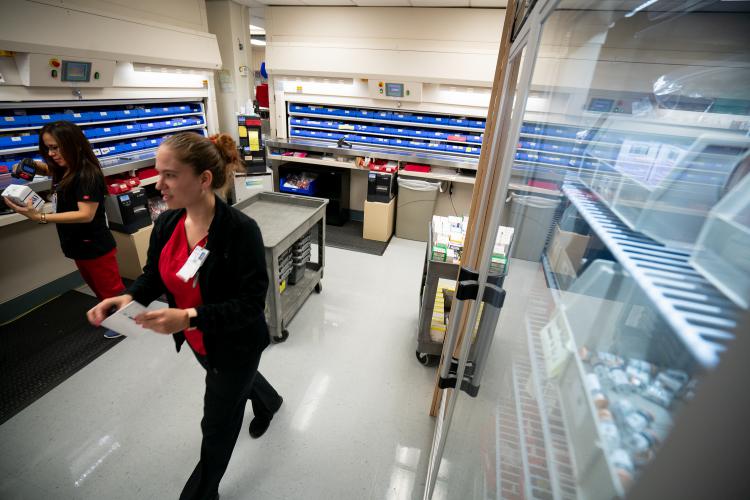
Planning ahead is an important consideration when it comes to patient safety.
That’s especially true in the JPS Health Network Pharmacy Services Department where a group of team members is dedicated to making sure all the supplies doctors and nurses require to take care of patients are on hand when they’re needed.
“We can’t wait until we figure out we’re almost out of something before we order more of it,” said Director of Inpatient Pharmacy Nick Milazzo. “By then it’s going to be too late. We have to anticipate what’s happening both with our inventory and with the market so we can get the things we need – or at least so we can come up with alternate plans – before a shortage becomes an issue.”
To stay on top of its medication supply and out front of the pharmaceuticals market, JPS leaders created a Pharmacy Services Department critical shortage task force charged with monitoring the medication supply and anticipating future needs.
How does the task force, a 2018 JPS Bright Sports Award winner, get the job done?
Inpatient Pharmacy Buyer Amber Hardee said it meets three times a week to monitor the status of the health network’s pharmaceutical supplies both on the pharmacy shelves and on the floors of the various patient units around the hospital. It compares the results to records of drug usage in previous months in order to anticipate likely future needs. The group also discusses what’s on the health network’s critical shortage list and the scheduled release dates for the next batches of needed drugs from pharmaceutical distributors.
One example of the task force succeeding for JPS and its patients came over the course of the past few months when an effort to replace opioid-based pain medications with safer, less addictive alternatives began. The shift in pain management caused a nation-wide shortage of Methocarbamol, a skeletal muscle relaxant that provides pain relief by easing muscle spasms. The task force had to move quickly to find an alternate medication.
The group quickly put a plan in place to acquire Tizanidine, a similar muscle relaxant, as it located and built up a supply of Methocarbomol. Milazzo said, after four months of contingency planning, JPS was able to return to Methocarbomol this week.
Hardee said planning ahead isn’t only important to make sure patients get all the medications they require. It’s also important in keeping patient care organized and operating smoothly.
The Epic patient management computer system is pre-programmed with the types and doses of medications patients are supposed to get for certain conditions and circumstances, Hardee said. If they don’t get the right product in the right amount at the right time, the system designed to make sure patients don’t get the wrong medication could trigger alarms all across the hospital.
“You can’t just wing it at the last minute or you’re going to have a mess,” Hardee said. “We have to plan ahead and prepare for what’s coming to make sure we don’t have problems.”
Milazzo said the task force has been in place for a little bit more than a year. Since it has come in to play shortages are rare, occurring once a month or less – and when they do happen, they’re much more quickly and efficiently managed.
“We have to try to keep our inventory lean because you don’t want medications to expire on the shelves,” Milazzo said. “So there is always a delicate balancing act of making sure you don’t have too much – but that you also don’t have too little. The task force does a great job of keeping us where we need to be.”
